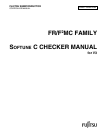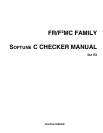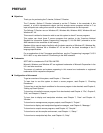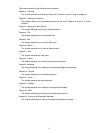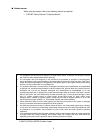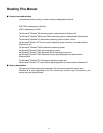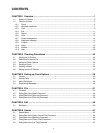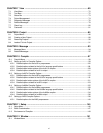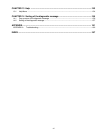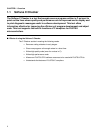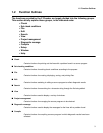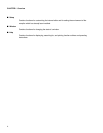i
PREFACE
■ Objectives
Thank you for purchasing the C checker, Softune C Checker.
The C checker, Softune C Checker (referred to as the C Checker in the remainder of this
manual), is a built-in development support tool that accepts source programs written in C as
input and points out coding errors as well as lines where performance can be improved.
The Softune C Checker runs on Windows XP, Windows Me, Windows 2000, Windows 98 and
Windows NT 4.0.
This manual is written for those who wish to use this system to check C source programs.
This system can check those C source programs that conform to the "American National
Standard for Information System Programming Language C, X3.159-1989" (referred to as the
ANSI standard in the remainder of this manual).
Readers of this manual require familiarity with the basic operation of Windows XP, Windows Me,
Windows 2000, Windows 98 or Windows NT 4.0 as well as the basic knowledge of the C
language specifications.
For an explanation of the C language specifications, see the "Programming Language C JIS X
3010-1993" or any other book on C conforming to the ANSI standard.
■ Trademarks
SOFTUNE is a trademark of FUJITSU LIMITED.
Microsoft, Windows, and Windows NT are registered trademarks of Microsoft Corporation in the
U.S. and other countries.
The names of products and systems appearing in this manual are trademarks or registered
trademarks of their respective companies.
■ Configuration of this manual
To get an overview of this system, read Chapter 1, "Overview."
To learn how to use this system to check a source program, read Chapter 2, "Checking
Procedures."
To learn how to set the check conditions for the source program to be checked, read Chapter 3,
"Setting up Check Options."
To learn how to handle the source program file to be checked, read Chapter 4, "File," Chapter 5,
"Edit," and Chapter 6, "Search."
To learn how to display and manipulate windows, read Chapter 7, "View" and Chapter 12,
"Window."
To learn how to manage source program projects, read Chapter 8, "Project."
To learn how to display and manipulate diagnostic messages, read Chapter 9, "Message."
To learn how to compile source programs, read Chapter 10, "Compile."
To learn how to set the compiler environment, read Chapter 11, “Setup.”
To learn how to manipulate help files, read Chapter 13, "Help."



